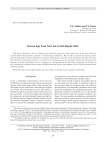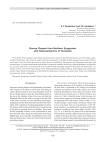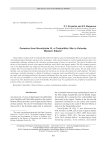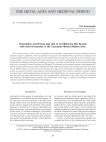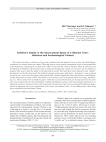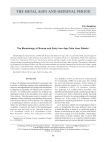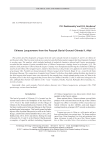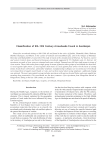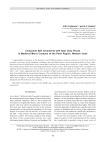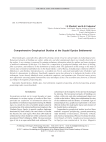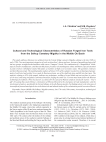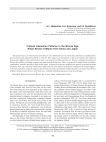The metal ages and medieval period. Рубрика в журнале - Archaeology, Ethnology & Anthropology of Eurasia
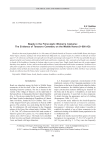
Статья научная
Beads are the most frequent finds in 1st–5th century AD female burials at Tarasovo on the Middle Kama, the largest Finno-Ugric cemetery, dating to the Great Barbarian Migration era. Larger beads are common in burials of women aged 17–45, whereas seed beads were typically worn by girls and young women aged 13–29. This was probably because unmarried girls wore beanies embroidered with beads and bronze ornaments. Also, variously sized beads were attached to bands of the headdress, framing its bottom edges in one or more lines. Single beads found near the crania suggest that they were amulets. In one- and several-strand necklaces, beads alternated with bronze ornaments. Necklaces were often parts of gift sets, some of which are completely preserved, including the organic base. Larger beads were used as pendants. Some of them decorated strips, used for appending knives and other utensils to belts. All these ways of using beads are still practiced by Finno-Ugric women in the Ural area.
Бесплатно
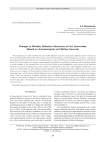
Статья научная
This study focuses on the southern line of wooden defensive structures (palisade, platform, and two towers) at Fort Umrevinsky (first third of the 18th century), based on the findings of archaeological excavations. Continuous development in this borderline fort are reconstructed over a period of 30 years. Initially, during the era of Peter the Great, Fort Umrevinsky was a regular, subrectangular fortification, enclosed by a palisade, and somewhat similar to a field redoubt. A few decades later, two towers were built on pile foundations at the corners of the palisade enclosure on the fort’s southern face. One of them was subquadratic, the other subrectangular in plan view. As a result, Fort Umrevinsky became a bastion-type fortification. The strengthening of the southern face was motivated by the presence of gates in the palisade wall between the towers, by the proximity of transportation routes (roads and waterways), and by the fact that fortifications were arranged parallel to the borderline. Fortification changes in the 1730s were caused by a number of factors. These included the spread of European fortification principles to Siberia, the political situation in southwestern Siberia, and the beginning of large-scale military engineering works in the region. The southern line of wooden fortifications at Fort Umrevinsky helps to estimate the number of towers there.
Бесплатно
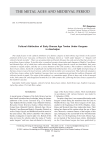
Cultural attribution of Early Bronze Age tombs under kurgans in Azerbaijan
Статья обзорная
Бесплатно



